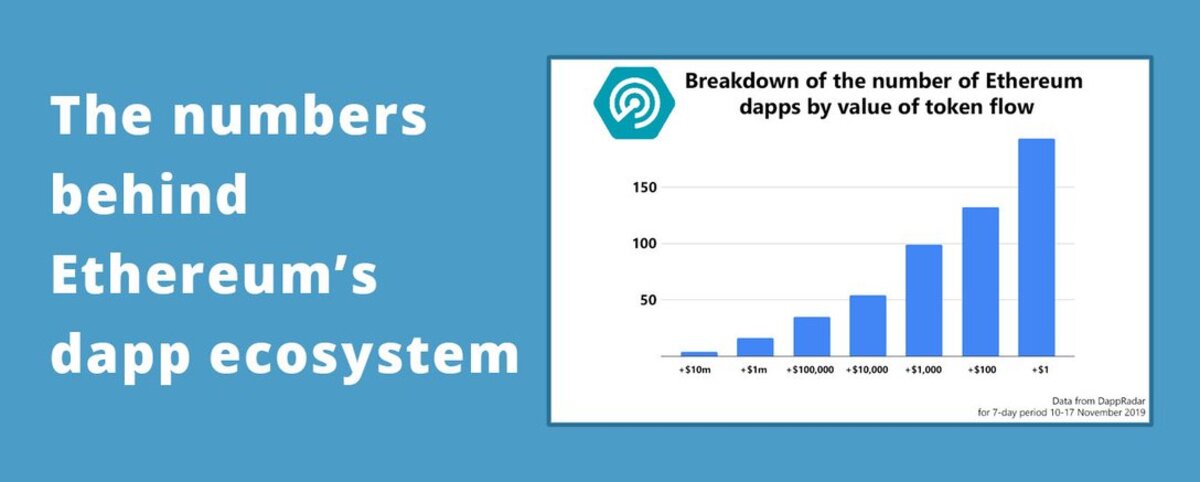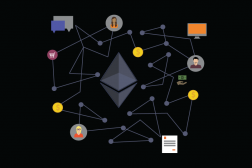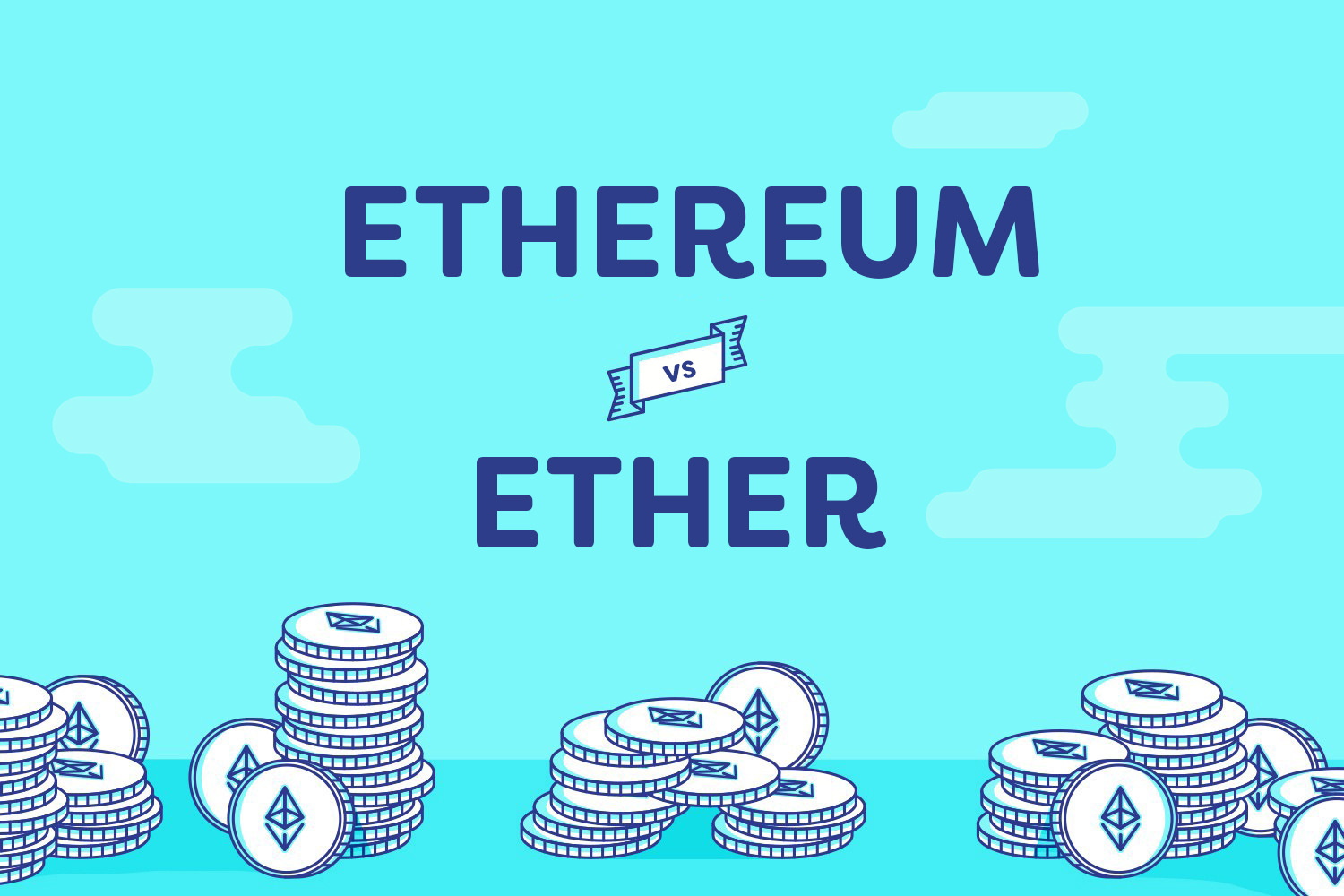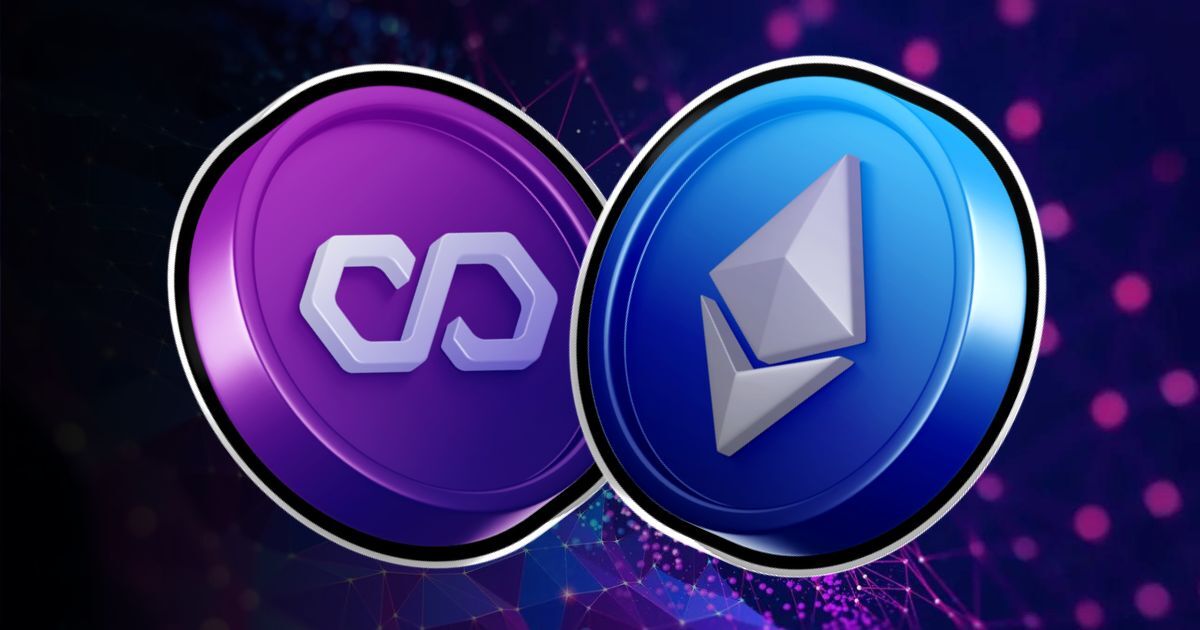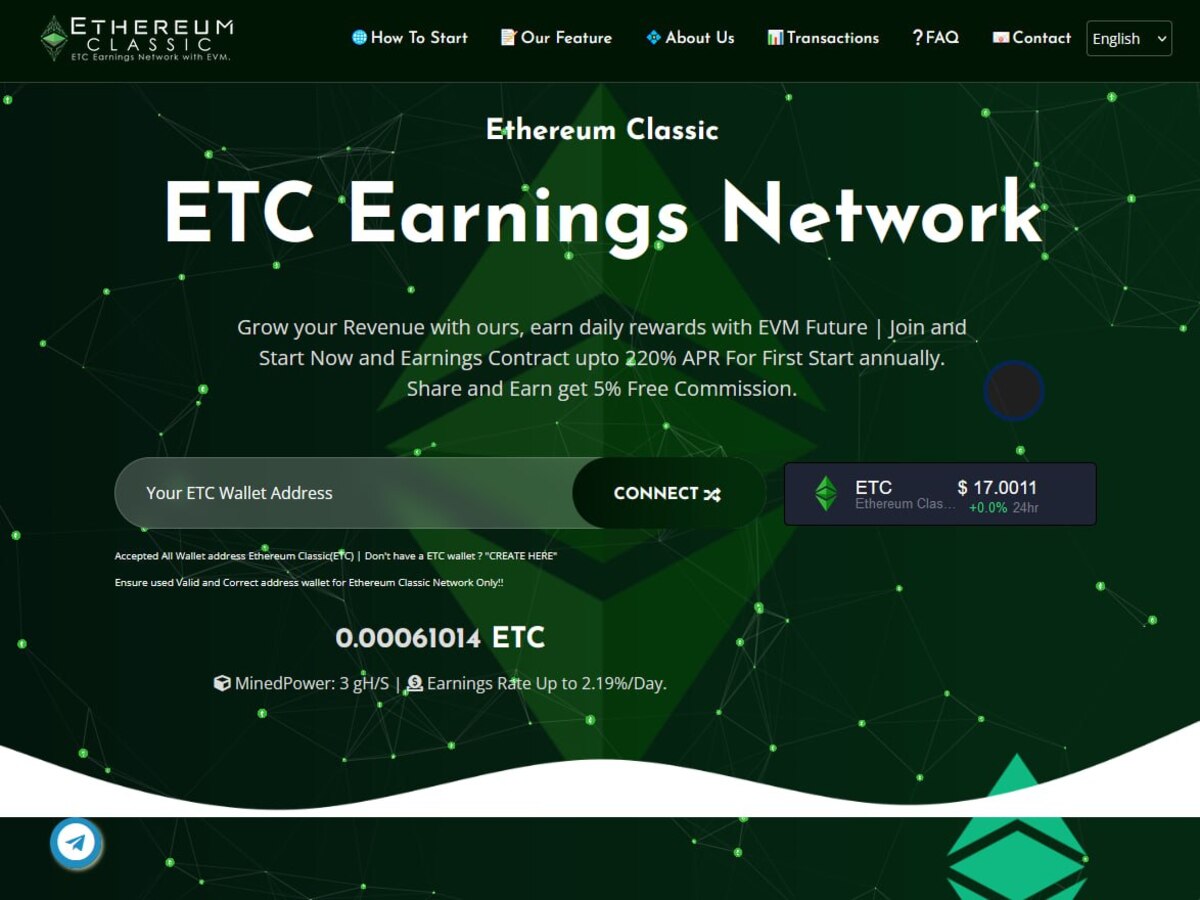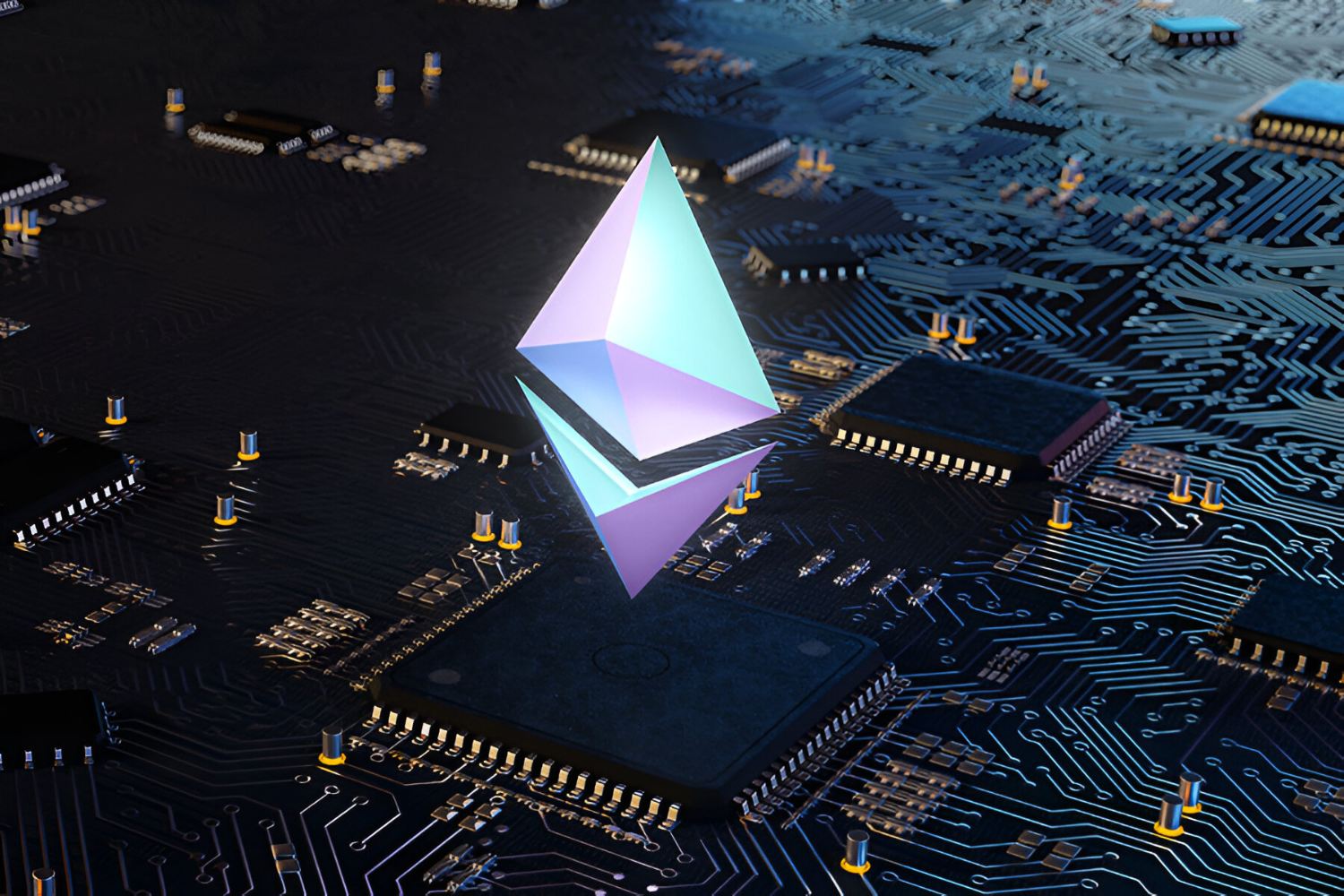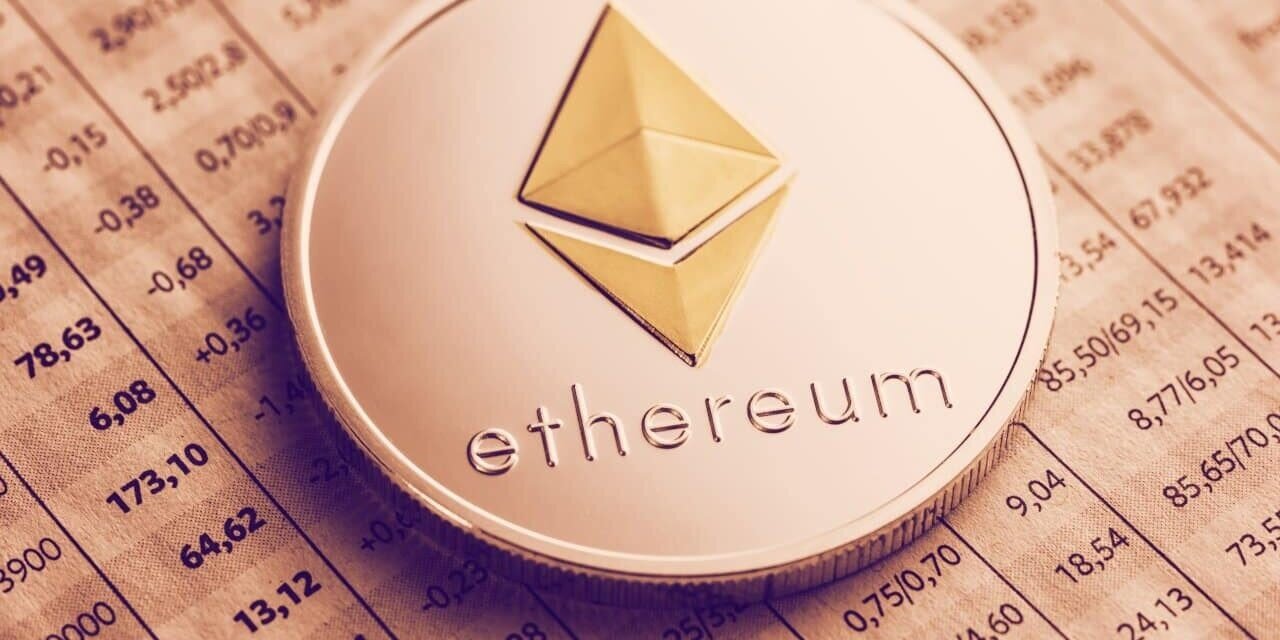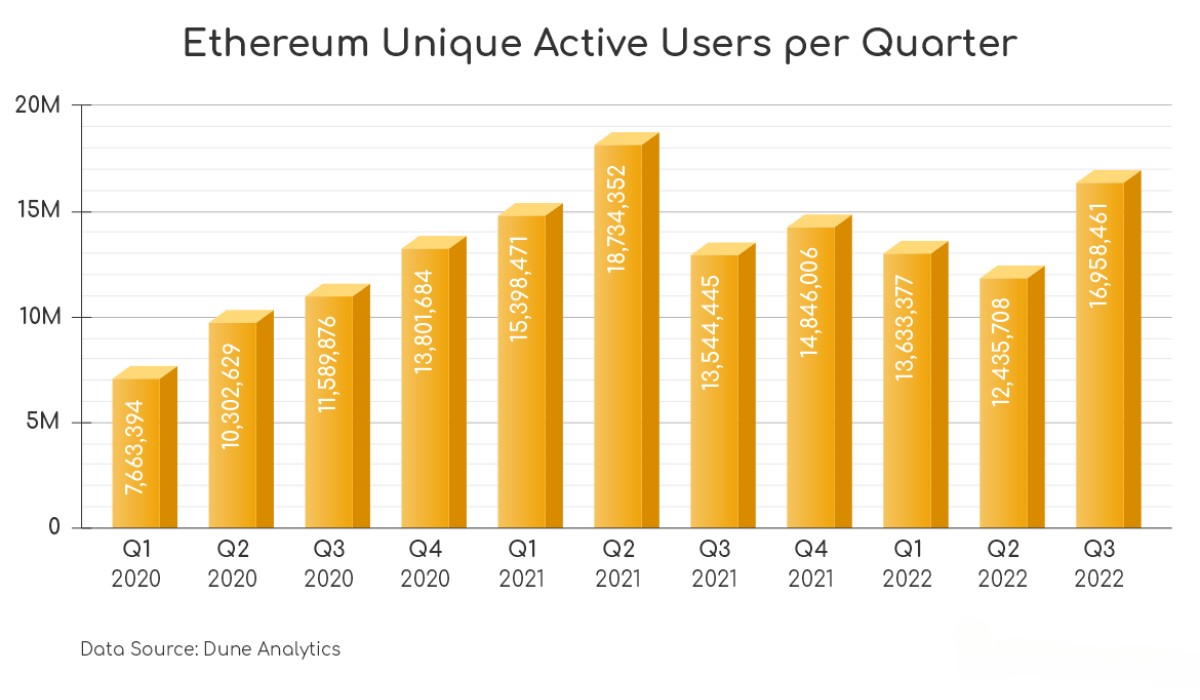Introduction
Dapps, or decentralized applications, have revolutionized various industries by leveraging blockchain technology to provide a decentralized and transparent environment. These applications eliminate the need for intermediaries and empower users with greater control over their data and digital assets.
Among the various blockchain platforms, Ethereum has emerged as a dominant force in the world of Dapps. Its programmable smart contracts enable developers to create complex and innovative applications that run on the Ethereum blockchain. Ethereum’s robust infrastructure, vast developer community, and its native cryptocurrency, Ether, have contributed to its position as the platform of choice for Dapp development.
In this article, we will explore the world of Dapps on Ethereum and uncover the number and diversity of applications that exist within its ecosystem. We will also delve into the types of Dapps, popular examples, challenges faced, and the future prospects of Dapps on Ethereum.
So, if you’re ready to dive into the world of decentralized applications on Ethereum, let’s get started!
What are Dapps?
Dapps, short for decentralized applications, are a new breed of software applications that leverage blockchain technology to operate in a decentralized and transparent manner. Unlike traditional apps that rely on centralized servers, Dapps run on a blockchain network, such as Ethereum, which ensures secure and immutable transactions.
There are several defining characteristics that differentiate Dapps from traditional applications:
- Decentralization: Dapps operate on a peer-to-peer network, eliminating the need for intermediaries. This decentralization ensures that no single entity has control over the application, making it resistant to censorship and single points of failure.
- Open-source: Dapps are built on open-source code, allowing anyone to inspect, contribute, and modify the application’s codebase. This fosters a collaborative environment and encourages innovation within the Dapp ecosystem.
- Tokenization: Many Dapps utilize tokens as a means of incentivizing users and facilitating transactions within the application. These tokens can be traded, exchanged, or used within the Dapp’s ecosystem, providing participants with a stake in the application’s success.
- Consensus Mechanism: Dapps rely on a consensus mechanism to validate and verify transactions. In Ethereum’s case, this mechanism is Proof-of-Work (PoW) or the upcoming Proof-of-Stake (PoS), which ensures the security and integrity of the blockchain.
With these characteristics, Dapps have the potential to disrupt various industries and enable new business models. They provide users with greater control over their data, increased privacy, and the ability to transact directly with others without the need for intermediaries.
It is important to note that not all applications built on a blockchain are considered Dapps. To be considered a Dapp, an application must meet the aforementioned criteria, particularly the aspect of decentralization.
Now that we have a basic understanding of what Dapps are, let’s explore why Ethereum has become the platform of choice for developing these decentralized applications.
Why Ethereum?
Ethereum has established itself as the leading platform for developing decentralized applications (Dapps) due to its unique features and capabilities. Let’s explore why Ethereum has become the go-to platform for the development of Dapps.
- Smart Contract Functionality: Ethereum’s biggest advantage lies in its ability to support smart contracts. Smart contracts are self-executing contracts with the terms of the agreement recorded on the blockchain. This functionality enables developers to build complex and automated Dapps without the need for intermediaries. Ethereum’s programmable smart contracts have opened up a world of possibilities for Dapp developers.
- Vibrant Developer Community: Ethereum has fostered a thriving and active developer community. This community is constantly pushing the boundaries of what is possible with Dapps, sharing knowledge, and collaborating on new projects. The Ethereum community provides valuable resources, libraries, and development tools, making it easier for developers to build Dapps on the platform.
- Interoperability: Ethereum promotes interoperability by allowing Dapps to interact with each other through the use of standards such as ERC-20 (for fungible tokens) and ERC-721 (for non-fungible tokens). This interoperability enables Dapps to seamlessly communicate and share data, creating a rich and interconnected ecosystem.
- Scalability Solutions: Ethereum has recognized the need for scalability solutions to handle the increasing demand for Dapps. Projects like Ethereum 2.0, which will transition Ethereum from a Proof-of-Work (PoW) to a Proof-of-Stake (PoS) consensus mechanism, and layer 2 solutions like Optimistic Rollups and Plasma Network, aim to improve Ethereum’s scalability and transaction throughput.
- Established Infrastructure: Ethereum has a well-established infrastructure, including wallets, exchanges, and development tools. This infrastructure makes it easier for users to interact with Dapps and for developers to deploy and maintain their applications.
The combination of these features has made Ethereum the platform of choice for Dapp developers. The ability to leverage smart contracts, the vibrant developer community, interoperability, scalability solutions, and the existing infrastructure make Ethereum an ideal platform for creating innovative and functional Dapps.
Now that we understand why Ethereum is the leading platform for Dapp development, let’s explore the number of Dapps currently on the Ethereum network.
How Many Dapps are on Ethereum?
The Ethereum network has seen tremendous growth in the number of decentralized applications (Dapps) built on its platform. These Dapps span across various industries and offer a wide range of functionalities to users. While it is difficult to provide an exact number due to the evolving nature of the ecosystem, there are several ways to gauge the number of Dapps on Ethereum.
One commonly used metric is the number of Dapps listed on popular Dapp analytics websites such as DappRadar, State of the Dapps, and Dapp.com. These platforms track and catalog Dapps based on different criteria, including active users, transaction volumes, and token value locked in the Dapp.
As of [current date], there are approximately [number] Dapps listed on these platforms. It is important to note that this is not an exhaustive list, and there may be additional Dapps that are not included in these rankings.
The diverse range of Dapps on Ethereum includes decentralized finance (DeFi) platforms, gaming applications, decentralized exchanges (DEXs), non-fungible token (NFT) marketplaces, social networks, and many more. Each Dapp offers its unique set of features and targets specific user needs.
The growth of Dapps on Ethereum can be attributed to the platform’s flexibility, with its programmable smart contracts allowing developers to create innovative and customizable applications. Additionally, Ethereum’s established infrastructure, active developer community, and interoperability further contribute to the proliferation of Dapps on the network.
It is worth noting that the number of Dapps on Ethereum is constantly changing as new projects are launched, and existing Dapps evolve or discontinue their operations. The fast-paced nature of the blockchain space ensures a dynamic and ever-evolving ecosystem.
Now that we have an understanding of the number of Dapps on Ethereum, let’s explore the different types of Dapps that exist on the platform.
Types of Dapps on Ethereum
The Ethereum platform hosts a wide array of decentralized applications (Dapps) that cater to various needs and industries. These Dapps can be classified into different categories based on their functionality and purpose. Let’s explore some of the common types of Dapps found on Ethereum:
- Decentralized Finance (DeFi): DeFi has emerged as one of the most significant use cases for blockchain technology. DeFi Dapps leverage smart contracts to provide financial services such as lending and borrowing platforms, decentralized exchanges (DEXs), yield farming protocols, stablecoins, and decentralized money markets. The growth of DeFi on Ethereum has been exponential, with billions of dollars locked in various DeFi protocols.
- Gaming and Non-Fungible Tokens (NFTs): Ethereum is a popular platform for gaming Dapps and NFT marketplaces. These Dapps allow users to purchase, collect, and trade unique digital assets such as in-game items, virtual real estate, artwork, and collectibles. NFTs have gained significant attention and have opened up creative opportunities for artists and creators to monetize their digital creations.
- Social Networking: Ethereum-based social networking Dapps aim to create decentralized and censorship-resistant platforms for communication and content sharing. These Dapps provide users with greater control over their data, privacy, and the ability to interact directly with others without intermediaries.
- Supply Chain and Logistics: Dapps in the supply chain and logistics sector utilize blockchain technology to enhance transparency, traceability, and efficiency in the movement of goods. These Dapps enable stakeholders to track and verify the provenance of products, reduce fraud, and streamline processes across the supply chain.
- Governance and Voting: Ethereum also hosts Dapps that facilitate decentralized governance and voting systems. These Dapps allow users to participate in decision-making processes, vote on proposals, and contribute to the governance of decentralized organizations and protocols.
- Healthcare and Identity: Dapps in the healthcare sector aim to address issues related to data security, interoperability, and patient consent. These Dapps enable secure storage and sharing of medical records, allow patients to have control over their health data, and facilitate interoperability between different healthcare providers.
These are just a few examples of the types of Dapps that exist on the Ethereum platform. The versatility and flexibility of Ethereum’s smart contract functionality have paved the way for an ever-expanding ecosystem of innovative and impactful Dapps.
Now that we have explored the different types of Dapps, let’s examine some popular examples of Dapps on Ethereum.
Popular Dapps on Ethereum
Ethereum is home to numerous popular decentralized applications (Dapps) that have gained traction and popularity within the blockchain ecosystem. These Dapps have attracted users, investors, and developers due to their unique features and innovative use cases. Let’s take a look at some prominent examples of popular Dapps on Ethereum:
- Uniswap: Uniswap is a decentralized exchange (DEX) platform that allows users to trade Ethereum-based tokens directly from their wallets. It operates on the automated market maker (AMM) model, providing liquidity through smart contracts. Uniswap is known for its ease of use, low fees, and its role in facilitating the explosive growth of decentralized finance (DeFi).
- Aave: Aave is a decentralized lending and borrowing platform that utilizes smart contracts to enable users to lend and borrow a wide range of digital assets. Aave offers unique features such as flash loans, where users can borrow without collateral as long as the funds are returned within a single transaction. It has become one of the leading DeFi protocols in terms of locked-in value.
- CryptoKitties: CryptoKitties is a game built on Ethereum that allows users to collect, breed, and trade unique digital cats. Each CryptoKitty is represented as a non-fungible token (NFT), giving them distinct characteristics and value. CryptoKitties gained significant attention in 2017 and highlighted the potential of NFTs and blockchain-based gaming applications.
- Compound: Compound is a decentralized lending platform that enables users to earn interest on their digital assets or borrow assets by providing collateral. Users can supply their tokens to a liquidity pool and earn interest based on the utilization of their funds. Compound has been instrumental in driving the growth of decentralized finance.
- MakerDAO: MakerDAO is a decentralized autonomous organization (DAO) responsible for the creation of the DAI stablecoin. DAI is a decentralized stablecoin that maintains a 1:1 peg with the US dollar through a system of collateralized debt positions (CDPs). MakerDAO allows users to generate DAI by locking up their Ethereum as collateral.
- ENS (Ethereum Name Service): ENS is a decentralized domain name system that allows users to register and manage domain names on the Ethereum blockchain. ENS simplifies the process of interacting with cryptocurrency addresses by replacing complex addresses with human-readable names.
These popular Dapps on Ethereum demonstrate the innovation and potential of the platform. From DeFi and gaming to decentralized exchanges and lending protocols, each Dapp showcases unique features and impacts various sectors of the blockchain industry.
It is important to note that the popularity of Dapps can fluctuate over time as new projects emerge and user preferences evolve. However, these examples highlight the diversity and success of Dapps on Ethereum.
Now that we’ve explored popular Dapps on Ethereum, let’s discuss some of the challenges faced by these decentralized applications.
Challenges Faced by Dapps on Ethereum
While Ethereum has established itself as the leading platform for decentralized applications (Dapps), there are several challenges that developers and users face within the ecosystem. These challenges can impact the scalability, user experience, and overall adoption of Dapps on Ethereum. Let’s explore some of the key challenges:
- Scalability: Ethereum’s current infrastructure faces scalability limitations, resulting in network congestion and high transaction fees during periods of high demand. The limited transaction throughput hinders the seamless and efficient functioning of Dapps, especially during periods of peak activity.
- Gas Fees: Gas fees are the fees required to execute transactions and smart contracts on the Ethereum network. The volatile nature of gas fees can make it expensive for users to interact with Dapps, particularly for small transactions. This can pose a barrier to entry for users, especially for those with limited financial resources.
- User Experience: The user experience of interacting with Dapps on Ethereum can be challenging for non-technical users. The process of setting up wallets, managing private keys, and navigating the decentralized interfaces can be overwhelming for newcomers. Improving the user experience and providing more user-friendly interfaces are essential for broader adoption.
- Interoperability: While Ethereum promotes interoperability through standards such as ERC-20 and ERC-721, there can still be limitations when it comes to seamless integration and communication between different Dapps. Ensuring smooth interoperability and data exchange between Dapps can enhance their functionality and potential use cases.
- Security: As with any decentralized system, security vulnerabilities can pose a significant challenge for Dapps on Ethereum. The complexity of smart contracts and potential bugs can lead to hacking incidents and loss of funds. Conducting thorough audits, implementing secure coding practices, and regular security assessments are crucial to mitigate these risks.
- Regulatory and Legal Challenges: As the Dapp ecosystem evolves, regulatory and legal challenges may arise. Ensuring compliance with existing regulations and adapting to new frameworks can be complex and time-consuming for Dapp developers. Navigating the legal landscape without sacrificing the core principles of decentralization is an ongoing challenge.
Addressing these challenges is crucial for the continued growth and success of Dapps on Ethereum. Through ongoing research, development, and community collaboration, the Ethereum ecosystem aims to overcome these obstacles and create a more scalable, user-friendly, and secure environment for Dapps.
Now that we understand the challenges faced by Dapps on Ethereum, let’s explore the future prospects and potential of these decentralized applications.
Future of Dapps on Ethereum
The future of decentralized applications (Dapps) on Ethereum holds immense potential as the platform continues to evolve and address its existing challenges. Several developments and initiatives are underway that could shape the trajectory of Dapp adoption and impact the overall Ethereum ecosystem. Let’s explore some of the key factors that could shape the future of Dapps on Ethereum:
- Ethereum 2.0: Ethereum is undergoing a major upgrade known as Ethereum 2.0, or Eth2. This upgrade aims to enhance scalability, security, and sustainability by transitioning from a Proof-of-Work (PoW) to a Proof-of-Stake (PoS) consensus mechanism. Eth2 will introduce shard chains, enabling parallel processing of transactions and significantly increasing the network’s capacity to handle Dapp activity.
- Layer 2 Solutions: Layer 2 solutions, such as Optimistic Rollups and ZK-Rollups, are being developed to address Ethereum’s scalability limitations. These solutions allow off-chain processing of transactions while maintaining the security of the Ethereum network. Layer 2 solutions can drastically reduce gas fees and enable faster and more cost-effective Dapp interactions.
- Improved User Experience: Efforts are being made to improve the user experience of interacting with Dapps on Ethereum. User-friendly wallets, simplified onboarding processes, and intuitive interfaces aim to make decentralized applications more accessible to mainstream users. This focus on usability and design could lead to increased adoption of Dapps among non-technical individuals.
- Regulatory Clarity: As the blockchain industry matures, regulatory frameworks are evolving to accommodate Dapps and cryptocurrencies. Clear and favorable regulations can provide legal certainty for Dapp developers and create a conducive environment for innovation. Collaboration between the industry and regulators is crucial in establishing a balanced approach that supports Dapp development while addressing potential risks.
- Expansion of Use Cases: As Ethereum’s infrastructure continues to improve, we can expect a broader range of Dapps catering to various industries and use cases. From finance and healthcare to supply chain management and governance, Dapps have the potential to reshape existing systems and provide more efficient, transparent, and inclusive solutions.
- Integration with Web 3.0: The convergence of decentralized applications with the concept of Web 3.0 aims to create a user-centric internet supporting data ownership, privacy, and decentralized infrastructure. Ethereum, being at the forefront of Web 3.0 development, is well-positioned to facilitate this transition by providing the platform for Dapps to integrate and thrive within this new paradigm.
The future of Dapps on Ethereum is exciting, as advancements in technology, scalability solutions, and regulatory developments create an environment conducive to their growth and adoption. As more developers and users embrace decentralized applications, Ethereum’s ecosystem is poised to become even more dynamic and impactful.
Now that we have explored the future prospects of Dapps on Ethereum, let’s reflect on the significance of these decentralized applications.
Conclusion
Decentralized applications (Dapps) on Ethereum have ushered in a new era of innovation, transparency, and empowerment. Through the use of blockchain technology and smart contracts, Ethereum has provided a platform for developers to build a diverse range of Dapps that cater to various industries and user needs.
Ethereum’s programmable smart contracts, vibrant developer community, and established infrastructure have positioned it as the leading platform for Dapp development. Dapps on Ethereum have showcased their potential across sectors, including decentralized finance (DeFi), gaming, social networking, supply chain, and more.
While the Ethereum ecosystem has faced challenges, such as scalability issues, gas fees, and usability concerns, efforts are underway to address these limitations. Ethereum 2.0, layer 2 solutions, and improved user experiences are expected to enhance the scalability, affordability, and accessibility of Dapps.
The future of Dapps on Ethereum looks promising, with ongoing developments set to shape the ecosystem. Eth2, regulatory advancements, expanding use cases, and integration with Web 3.0 will contribute to the growth and mainstream adoption of Dapps.
As the Ethereum ecosystem evolves, it is crucial for Dapp developers to prioritize security, usability, and compliance to ensure the continued trust and interest of users and investors. Collaboration between the industry and regulators is key to establishing a balanced framework that encourages innovation while protecting user interests.
In conclusion, Dapps on Ethereum are changing the way businesses and individuals interact, transact, and participate in digital ecosystems. With their decentralized nature and the vast potential they offer, Dapps are poised to revolutionize industries, empower users, and shape the future of technology.







